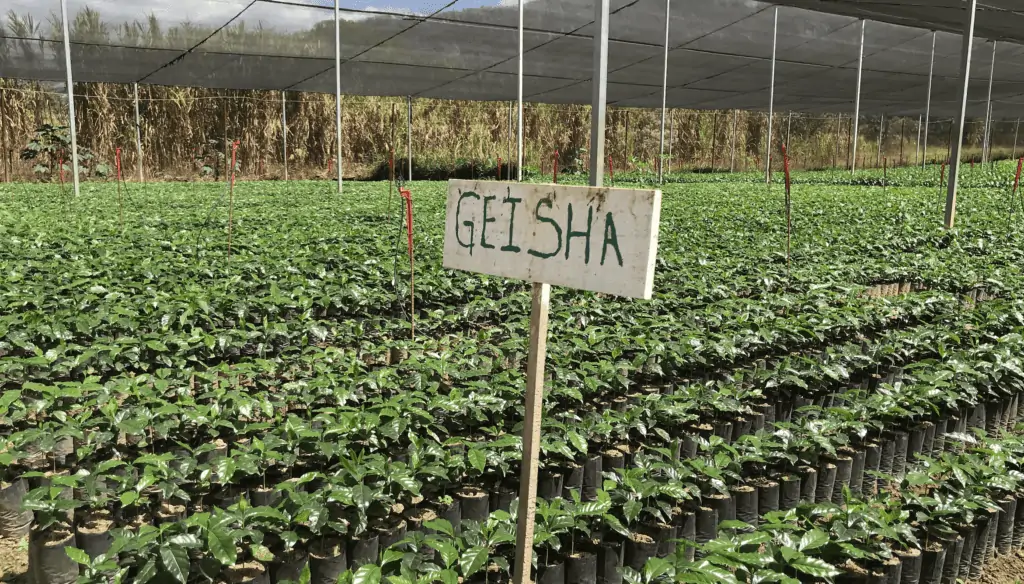
Geisha seedlings in a Chiapas, Mexico nursery. Courtesy of Kim Westerman.
The Geisha variety of Arabica is the most expensive green coffee in the world. Year after year, this sought-after variety — known for (in the hands of a good roaster) its florality, delicate fruit, integrated structure and balance — breaks new price records in the Best of Panama auction. The Panama with the highest price in 2021 was a Geisha that sold for $2,568.00 — per pound. It’s gotten stratospheric in the way that wine auctions did long ago. You can debate the relative (in)sanity of this phenomenon, but the fact is that Geisha is the darling of the specialty coffee world.
Geisha’s Migration Around The Globe
Geisha originated in the Gori Gesha Forest of Ethiopia, but made its spectacular appearance on the global specialty coffee stage in Panama, where, in 2004, a Geisha grown by the Peterson family won the Best of Panama green coffee competition with an unprecedented high score. The following year, a Peterson Geisha won the competition again and was sold at auction with a then record-breaking winning bid of $305 a pound. The Geisha race was on. Geisha is now to Panama as Kona is to Hawai’i — its crown jewel and its most widely known luxury product. Not surprisingly, it didn’t take long for producers in other countries to try their hand at this fabled variety. In 2021, it’s hard to think of anywhere coffee is grown that doesn’t have at least some Geisha planted. The question is: How good is it? Does the legendary Geisha cup profile travel?
For this month’s report, we decided to look at the Geisha variety grown anywhere outside of Panama. We received Geishas produced in Ethiopia, Tanzania, Colombia, Peru, Costa Rica, Guatemala, Brazil, Mexico, and Taiwan — nearly 100 samples, all told. Does the Geisha variety fare in other growing regions as well as it does in tried-and-true Panama?
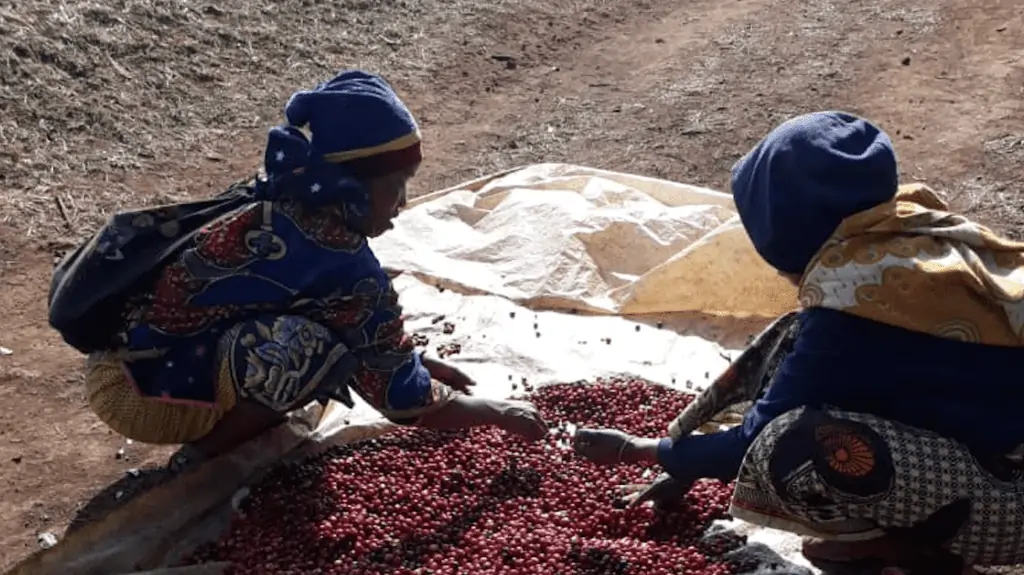
Sorting Geisha cherries at Acacia Hills Farm in Tanzania. Courtesy of Chromatic Coffee.
Geisha’s increasing desirability for producers makes sense: Geisha is low-yielding and challenging to grow, but farmers can earn a lot more per finished pound than they can for almost any other variety. Trends in consumer demand, which largely determine producers’ inclinations, are more complicated. It seems that the trend is not necessarily toward the Geisha variety, exclusively, but more toward differentiation from the norm, which can take the form of varietal distinctions but may encompass experimental processing methods, as well (something we’ll touch on in a bit).
The people who love Geisha fall into two camps: those who recognize and appreciate its inherently compelling characteristics but only spring for it on special occasions, and those who are obsessed with it, spending whatever they must to stay in constant supply of the Champagne of coffee. These camps, however, cannot agree on how to spell it.
A Rose By Any Other Spelling
Is it “Geisha” or “Gesha?” That depends on who you ask. While there is no hard and fast rule, Panama producers tend to use Geisha because the Petersons found documentation from the British Consulate, written in 1936, that use this spelling, claiming that this variety of Arabica was discovered near “Geisha Mountain” in Ethiopia. However, there doesn’t seem to be any such place, and African producers tend to use the Gesha spelling, given that the name of the forest where the variety most likely originated is Gori Gesha, suggesting that “Geisha” is a misspelling. Both spellings are acceptable nowadays, and we at Coffee Review prefer Geisha for general use, but we use the Gesha spelling when a producer or roaster of a coffee we are reviewing uses it. We tend to see “Geishas” from Panama, “Geshas” from Africa, and no real consistency among other origins.
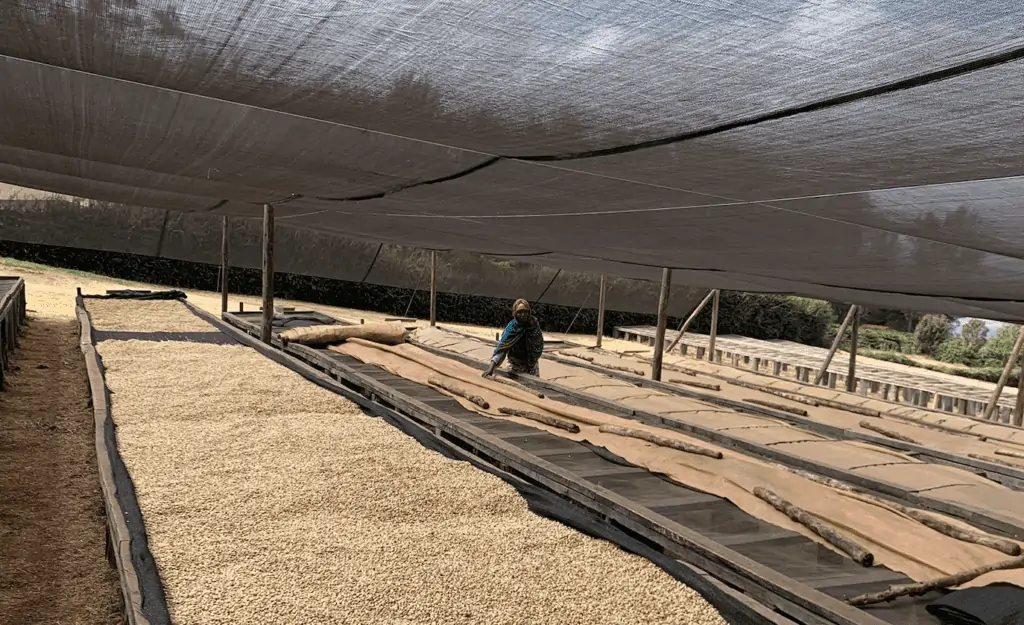
Geisha coffees drying on raised beds at Acacia Hills Coffee in Tanzania. Courtesy of Chromatic Coffee.
The most unfortunate consequence of the use of the “Geisha” spelling is its crossover with the word in Japanese culture, which has nothing whatsoever to do with the coffee variety. A handful of unscrupulous marketers have chosen to misappropriate the term with illustrations that falsely evoke Japanese culture, but these are few and far between.
Now that we’ve settled the spelling question, if only by embracing its ambiguity, what about the coffees themselves?
Nine Non-Panama Geishas
We cupped 98 coffees for this report, and scores ranged from 84-96. A full 65%, or 64 coffees, scored 90 or above, a very impressive showing. What is it about the Geisha variety of Arabica that makes it tend toward excellence? Geisha is tricky to grow. It is fairly disease-resistant but requires lots of attention; root systems are not as sturdy as most varieties of Arabica, and because of their foliar structure, photosynthesis is not as efficient. This means a lower volume of fruit but more concentration (just as in vineyards whose canopy styles privilege quality over volume). This is one reason Geisha can command such a high price. Another reason is its generally striking sensory character. A third reason is, well, people seem willing to pay extra for its relative rarity, what they perceive to be its “exoticism.”
The “exotic” is a problematic concept, both geo-politically and culturally, and we avoid the term not only because it’s a form of “othering” but also because it’s really no longer true. Geisha is grown just about everywhere in the world where soils and altitudes are conducive to growing coffee.
What was so revealing about this report cupping is that we turned up Geishas from six countries outside of Panama that scored between 93 and 96, I daresay this is as impressive a top nine as we might find in an all-Panama Geisha cupping.
Two samples scored 96, a Colombia and a Guatemala, the former from San Diego’s always-impressive Bird Rock, and the latter from Taiwan rock-star roaster Kakalove. The Bird Rock Colombia La Siria Geisha, produced by Anibal Burban, was processed by the traditional washed method. It is complex and lyrically fruit-toned, displaying notes of pluot, cocoa nib, Meyer lemon zest, star jasmine and pistachio in aroma and cup. Kakalove’s Guatemala Santa Felisa Wild Yeast Natural Gesha is fermented in the whole fruit with the addition of wild yeasts (borrowing a page from vinicultural trends), resulting in what is, essentially, a fermented natural. The cup is playfully intricate and tropical. Think lychee, macadamia nut, pink grapefruit zest, cocoa nib and plumeria.
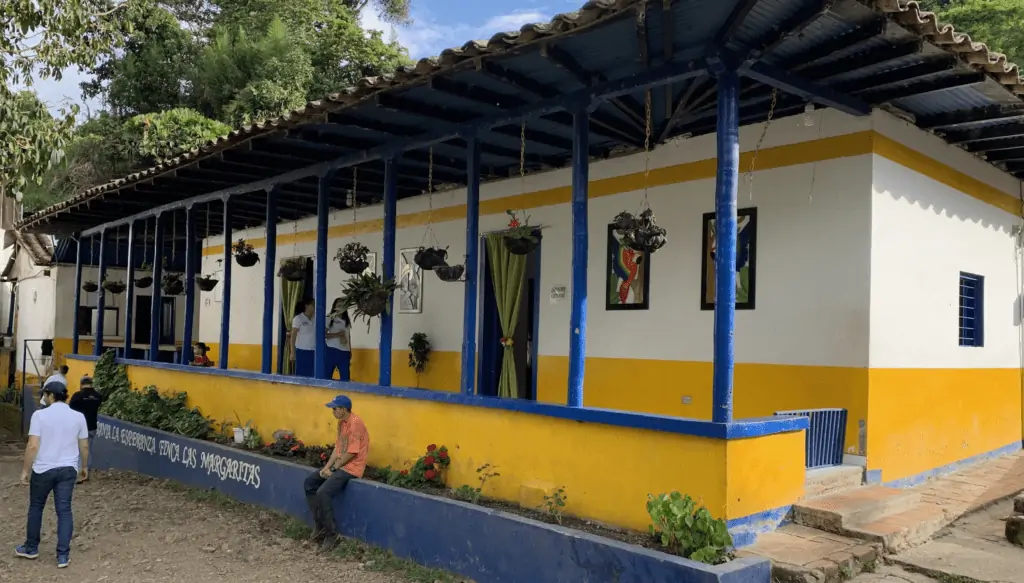
Colombia’s Cafe Granja La Esperanza Las Margaritas Farm. Courtesy of PT’s Coffee Roasting Co.
Two coffees we rated 95 are just as compelling in their nuance and complexity. Kansas City-based PT’s Coffee submitted a Colombia Granja La Esperanza Las Margaritas Gesha Honey, whose producer is world-renowned for successful high-altitude washed coffees. The Herrera brothers, Rigoberto and Luis, have carried on their family’s traditions and extended them into the realm of experimental processing. This coffee has notes of strawberry-guava, cocoa nib, wild honey, marjoram and lilac. Chromatic Coffee’s Tanzania Acacia Hills Gesha Peaberry (note the African spelling of “Gesha”) offers a richly sweet-savory counterpoint, with notes of blackberry jam, toffee, lavender, spearmint, fresh-cut cedar — a bit like a great Kenya on steroids.
Distinguished coffees from Colombia, Peru and Costa Rica came in at 94: Bay Area-based Equator Coffee’s Colombia La Palma Y El Tucán Gesha Natural; Taiwan-based GK Coffee’s Peru Yanesha Geisha Washed Anaerobic; and Connecticut-based Willoughby Coffee’s Costa Rica La Rejolla Washed Geisha.
Rounding out the field are two 93-scoring Geishas roasted in Taiwan: Omine Coffee’s Guatemala Geisha and Wuguo’s Ethiopia Washed Micro-Anaerobic Geisha.
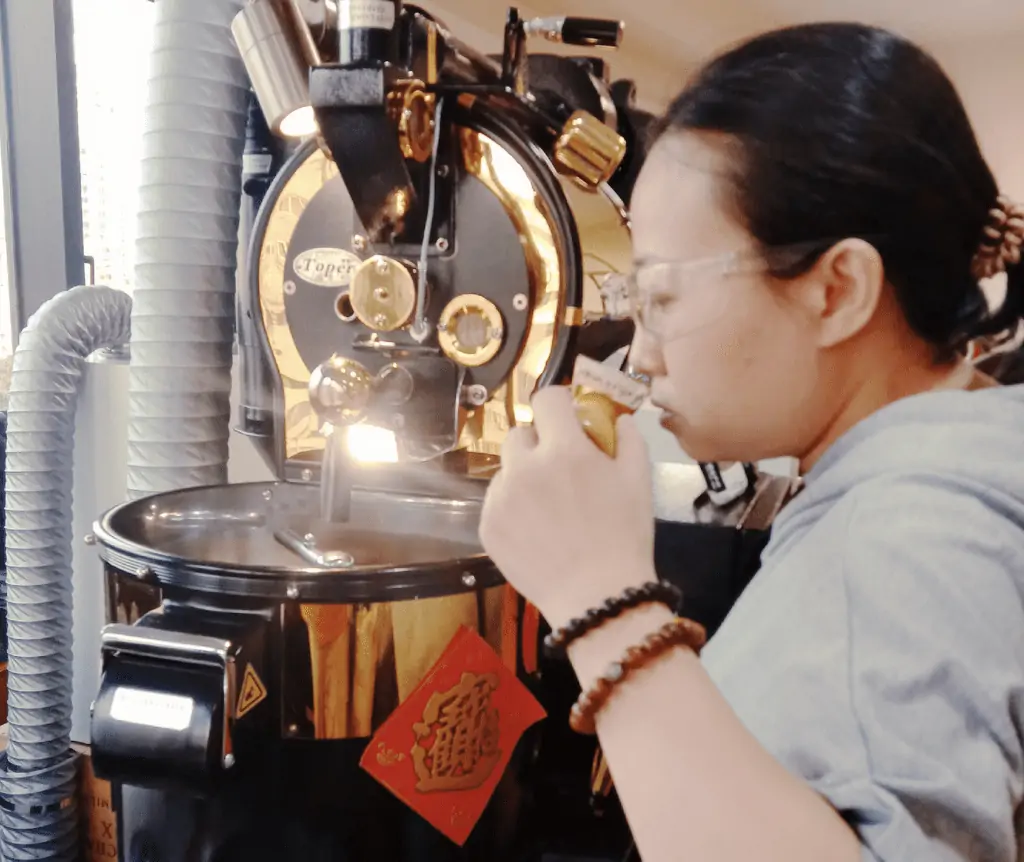
Roaster Yoyo Guo at Taipei-based Wuguo Cafe. Courtesy of Wuguo.
Processing Experiments and Classic Profiles
One might ask, if Geisha is such an impressive green coffee when processed using the classic washed and now-classic natural methods, why one would want to apply newer, profile-altering processing techniques to it? Wouldn’t there be more incentive to showcase the classic Geisha aromatics and flavors via proven, familiar processing techniques? Of the nine coffees we review here, three are washed, three are sun-dried naturals, and three offer experimental twists on these methods.
Just as farmers throughout coffeelands have planted Geisha to differentiate their offerings and present consumers with novel cup profiles, they have experimented with unusual processing methods for the same reason – to add value to their coffees and provide another sensory journey for consumers. So, just as Geisha lovers fall into camps by degree of their level of obsession with the variety, coffee drinkers tend toward one of several personalities: classic or creative.
I happen to be someone who enjoys the morning ritual of a classic cup (give me a great Kenya or washed Ethiopia any day of the week), though I like my wild, sometimes even funky, forays in the afternoon where I’m going more for sensory exploration and a brain break than Proustian comfort, whereas many friends always want to wake up to a sensory surprise, and the variations on profile created by anaerobic processing (coffees fermented in low-oxygen environments) certainly provide that. (See our May 2021 report Fun with Ferment: Anaerobically Processed Coffees. It remains to be seen how far producers will go with applying profile-altering experiments to the already different and deservedly venerated Geisha.
What Roasters Think About The Geisha Phenomenon
Barry Levine, of Willoughby’s Coffee, has been cupping Geishas from their first appearance on the coffee scene. He says, “For the first decade of Geisha production, the flavors were really perceived as novel. As more gets produced, both in Panama and now in many other countries, the novelty is less but the variety has developed a fan base, most notably in Asia. Some cafes there sell nothing but Geisha. For farmers, the motivation is a love of coffee quality and a chance to earn significantly more money for their work.”
Equator’s Ted Stachura loves Geisha simply for its unmistakability. He says, “The sweet floral aromatic quality that comes across in the best examples of Geisha is like few other coffees in the world.” But Hiver van Geenhoven, of Chromatic Coffee, is curious about the craze. He says, “It honestly surprises me that so many producers would pursue Geisha, considering how relatively low the yields are. It’s a significant sacrifice of quantity on their end, but for many, it’s worth it to chase the high prices and prestige of the darling of the specialty coffee world.” He adds, “I’ve seen tea enthusiasts convert to coffee because of Geishas. I’ve seen looks of surprise as people experience the layered flavors changing as the beverage cools, revealing unexpectedly complex and shifting tonalities and textures, which only continue to deepen, thicken, and intensify.”
GK Coffee’s Gary Liao says that some coffee drinkers in Taiwan want a Geisha option 365 days a year. And he welcomes the greater affordability of Geishas from countries other than Panama because it allows his customers to enjoy a kind of everyday luxury.
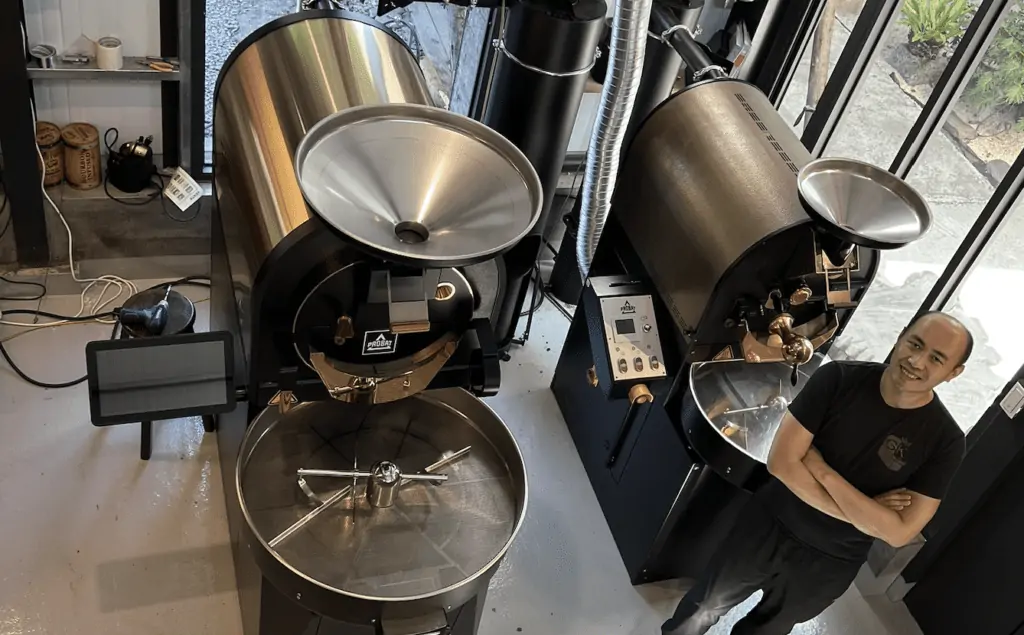
Roaster Gary Liao of GK Coffee in Yilan, Taiwan. Courtesy of GK Coffee.
And while this report is timed perfectly for the holiday season, when coffee lovers are more likely to feel spendy, these nine exemplars of Geisha grown outside of Panama remind us that the world of coffee offers both extravagance and relative access.










